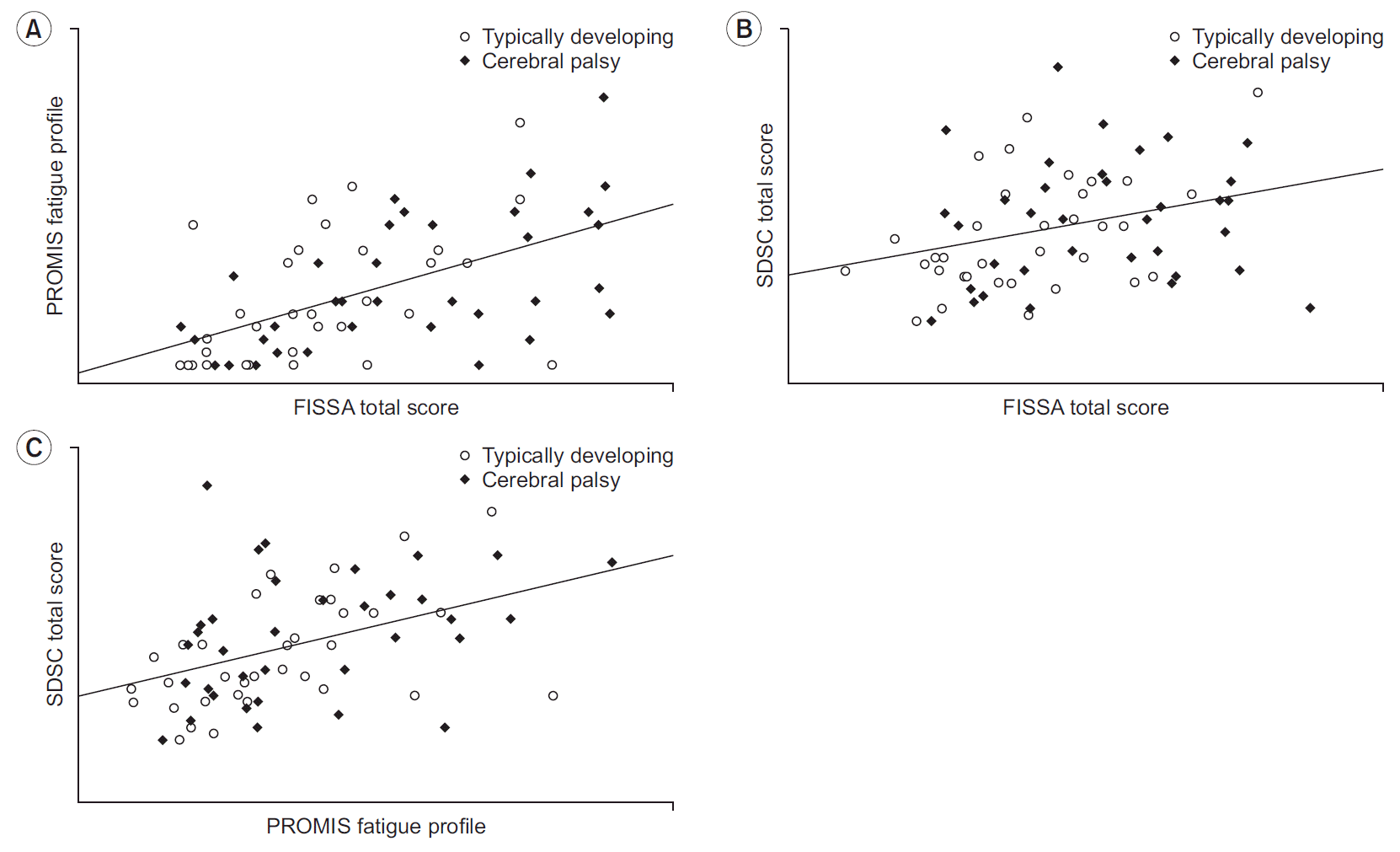1. Carpenito-Moyet LJ. Nursing diagnosis: application to clinical practice. 11th ed. Philadelphia, PA: Lippincott Williams & Wilkins;2006.
2. Currie C, Hurrlemann K, Settertobulte W, Smith R, Todd J. Health and health behaviour among young people. Copenhagen, Denmark: World Health Organization Regional Office for Europe;2000.
3. Brunton LK, Bartlett DJ. Profiles of fatigue severity and variability among adolescents and young adults with cerebral palsy. Fatigue. 2017; 5:5–14.

4. Brunton LK, Bartlett DJ. Construction and validation of the fatigue impact and severity self-assessment for youth and young adults with cerebral palsy. Dev Neurorehabil. 2017; 20:274–9.

5. Carskadon MA, Wolfson AR, Acebo C, Tzischinsky O, Seifer R. Adolescent sleep patterns, circadian timing, and sleepiness at a transition to early school days. Sleep. 1998; 21:871–81.

6. Newman CJ, O’Regan M, Hensey O. Sleep disorders in children with cerebral palsy. Dev Med Child Neurol. 2006; 48:564–8.

7. Hayashi M, Inoue Y, Iwakawa Y, Sasaki H. REM sleep abnormalities in severe athetoid cerebral palsy. Brain Dev. 1990; 12:494–7.

8. Kotagal S, Gibbons VP, Stith JA. Sleep abnormalities in patients with severe cerebral palsy. Dev Med Child Neurol. 1994; 36:304–11.

9. Romeo DM, Brogna C, Quintiliani M, Baranello G, Pagliano E, Casalino T, et al. Sleep disorders in children with cerebral palsy: neurodevelopmental and behavioral correlates. Sleep Med. 2014; 15:213–8.

10. Van Der Slot WM, Nieuwenhuijsen C, Van Den Berg-Emons RJ, Bergen MP, Hilberink SR, Stam HJ, et al. Chronic pain, fatigue, and depressive symptoms in adults with spastic bilateral cerebral palsy. Dev Med Child Neurol. 2012; 54:836–42.

11. Ramstad K, Jahnsen R, Lofterod B, Skjeldal OH. Continuous intrathecal baclofen therapy in children with cerebral palsy: when does improvement emerge? Acta Paediatr. 2010; 99:1661–5.
12. Lundy CT, Doherty GM, Fairhurst CB. Botulinum toxin type A injections can be an effective treatment for pain in children with hip spasms and cerebral palsy. Dev Med Child Neurol. 2009; 51:705–10.

13. Janzen L, Condliffe E, Toomey C, Kuntze G, Esau S, Brunton L, et al. Influence of regional lean mass on lower-extremity strength in youth with spastic cerebral palsy. Dev Med Child Neurol. 2019; 61(S3):111–2.
14. Lai JS, Stucky BD, Thissen D, Varni JW, DeWitt EM, Irwin DE, et al. Development and psychometric properties of the PROMIS pediatric fatigue item banks. Qual Life Res. 2013; 22:2417–27.

15. Bruni O, Ottaviano S, Guidetti V, Romoli M, Innocenzi M, Cortesi F, et al. The Sleep Disturbance Scale for Children (SDSC): construction and validation of an instrument to evaluate sleep disturbances in childhood and adolescence. J Sleep Res. 1996; 5:251–61.
16. Kuppuswamy A. The fatigue conundrum. Brain. 2017; 140:2240–5.

17. Brunton LK. Descriptive report of the impact of fatigue and current management strategies in cerebral palsy. Pediatr Phys Ther. 2018; 30:135–41.

18. Bolster EA, Balemans AC, de Groot V, Buizer AI, Dallmeijer AJ. Fatigue in children and young adults with physical disabilities: relation with energy demands of walking and physical fitness. Pediatr Phys Ther. 2020; 32:202–9.

19. Jahnsen R, Villien L, Stanghelle JK, Holm I. Fatigue in adults with cerebral palsy in Norway compared with the general population. Dev Med Child Neurol. 2003; 45:296–303.

20. Jahnsen R, Villien L, Egeland T, Stanghelle JK, Holm I. Locomotion skills in adults with cerebral palsy. Clin Rehabil. 2004; 18:309–16.






 PDF
PDF Citation
Citation Print
Print



 XML Download
XML Download